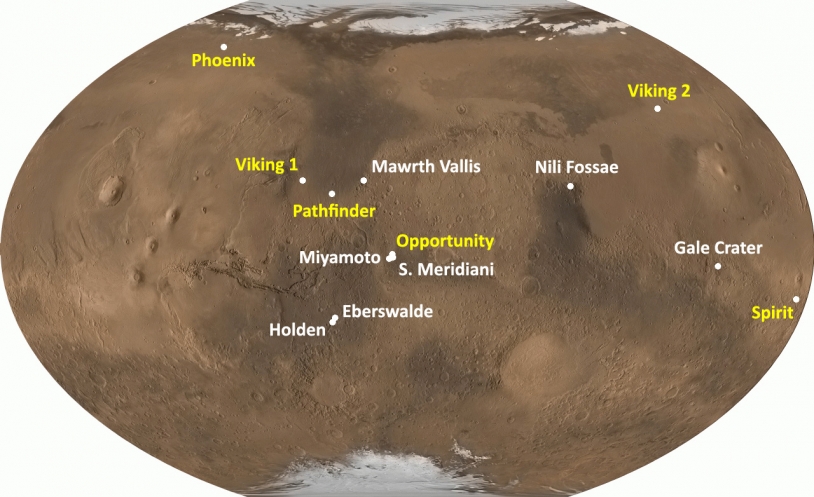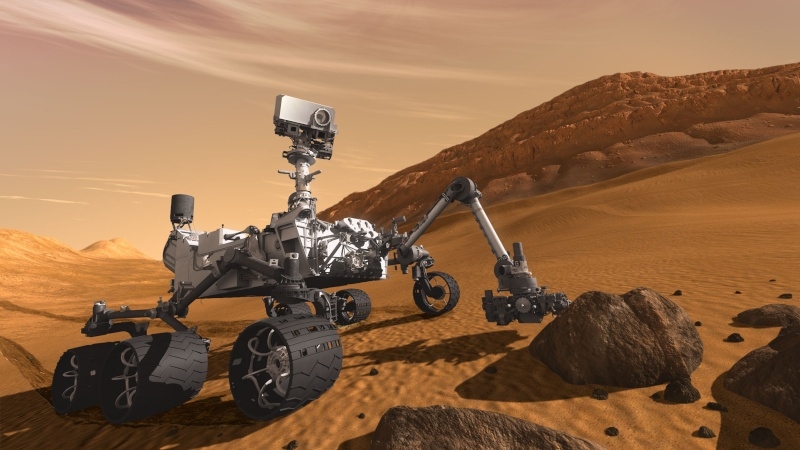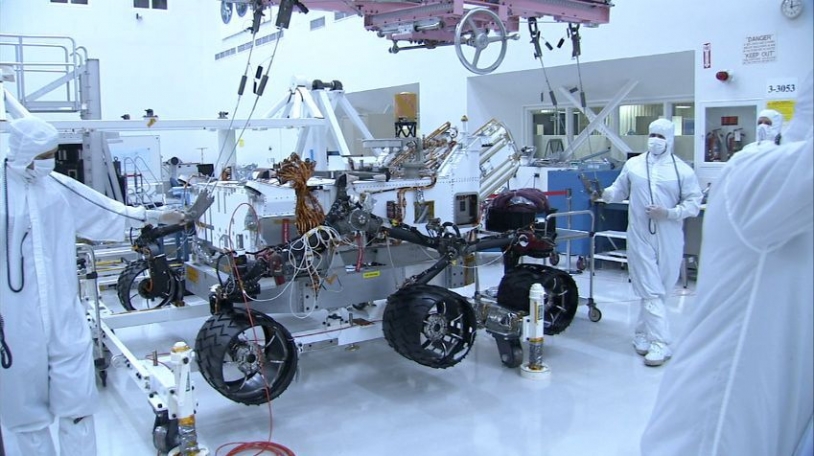Mars habitability

Choosing the right landing site for a Mars mission is always a long process in which engineers and scientists need to find ‘common ground’. The list of 100 potential sites for the MSL mission had to be whittled down to one.
Selection took over five years, with regular eliminations and two finalists: Eberswalde Crater and Gale Crater.
Both are interesting because the main task of America’s MSL science mission is to study Mars habitability — i.e. whether life as we know it ever existed on the Red Planet.
And since life relies on liquid water to emerge and develop, the target site needs to reveal the presence of clays. These form when water erodes rocks into sedimentary deposits, like the layers of mille-feuille pastry.
Potential for significant science findings

Both candidate sites show strong evidence that water once flowed there.
Eberswalde is believed to be an ancient delta, where a river emptied into a lake. Gale is an impact crater with a massive eroded sediment mound at its centre and channels carved by water runoff. Ultimately, this combination made Gale the favourite:
“Scientists identified Gale as their top choice to pursue the ambitious goals of this new rover mission,” said Jim Green, Director of NASA’s Planetary Science Division. “The site offers a visually dramatic landscape and also great potential for significant science findings.”

The MSL Curiosity rover, designed to perform in-situ analysis on the planet surface, will launch atop an Atlas V rocket between 25 November and 18 December 2011.
It will arrive at its destination nine months later. French teams are involved in two of the analysis instruments: ChemCam, which uses a laser to vaporize and analyse the composition of distant rocks (developed under the responsibility of the IRAP astrophysics and planetology research institute), and the SAM analysis suite, which includes the SAM-GC gas chromatograph (developed by the LATMOS atmosphere, environment and space observation laboratory).
Four years after Phoenix’s limited success, much is expected of this ambitious mission.